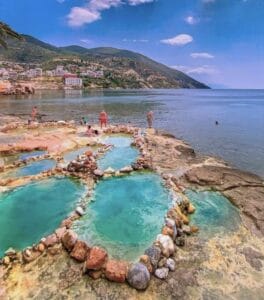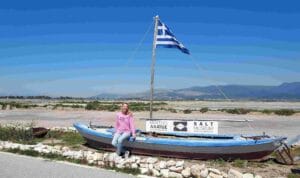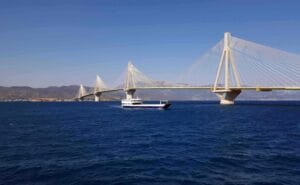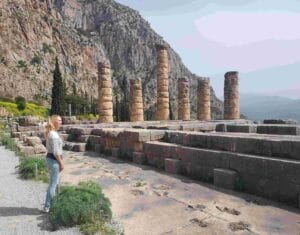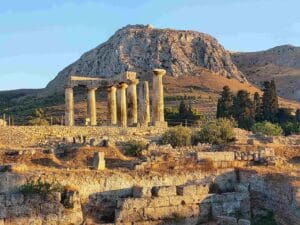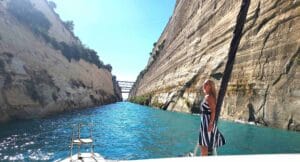After departing Kefalonia on the south coast, we made the crossing to the northwest coast of Zakynthos. We visited 10 highlights at Zakynthos, in part 1 of our blog we describe the 5 must sees on the west coast and part 2 will mention the 5 highlights we saw at the east coast.
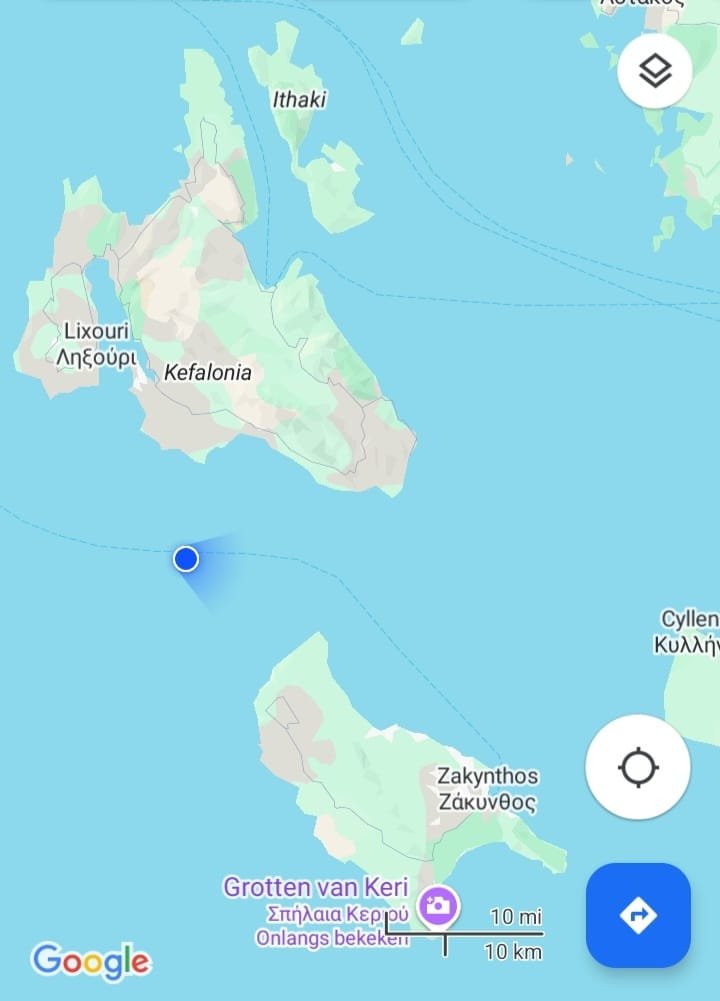

Zakynthos
Zakynthos is the southernmost island of the Ionian Sea and the largest after Corfu and Kefalonia. It is also called Zante and is named after Zakynthos, the son of King Dardanus from Greek mythology who was King of Troy. It was ruled by Venetians, French, British and finally became part of Greece in 1864. The Venetian influences are still visible in the architecture and culture of the island, which is often nicknamed “Fiore di Levante”, which means “Flower of the East”.
The island is approximately 40 kilometers long and 20 kilometers wide. The highest point of the island is Vrachionas, at 758 meters above sea level. In 1953, Zakynthos was hit by a major earthquake with a total of about 120 tremors, which destroyed 70% of the island
1. Shipwreck Beach
The most iconic spot in Zakynthos and perhaps in Greece is Navagio Beach, famous for the shipwreck that rests on its white sands. Surrounded by high cliffs, this beach is only accessible by boat. And since it was one of the first hot spots on the north west coast of Zakythos that we would pass by coming from Kefalonia, we went straight there.

The sail from Kefalonia was great, because there was wind coming from the northwest, but sailing into this bay, it became less pleasant, because it was not sheltered from the wind and because the water was quite shallow (6 meters) which made it a bit choppy to sail with the waves.
But when we came closer we saw the the contours of the stranded ship.


But we were distracted by something else: the bright blue water that gave an almost turquoise light! I looked it up why the color of the water was so bright here.
It turns out that the bright blue water is caused by a combination of natural factors. The surrounding high cliffs of white limestone reflect sunlight into the water, contributing to the intense blue hues. The limestone bedrock and rocks in and around the bay also make the water appear extra clear. The water at Navagio Beach is remarkably clean and shallow close to the shore. And the water around Zakynthos contains specific minerals that can refract light and make the water extra clear. This enhances certain colors, such as blue and turquoise.
The story behind this cargoship, MV Panagiotis is that stranded in October 1980, is that was smuggling cigarettes and alcohol. It ran aground in the bay due to bad weather and poor visibility. The crew abandoned the ship, which has since been beached and given its current name; previously it was known as Agios Georgios.

When we came closer, we saw the shipwreck very good. There were no other ships on the water, because it might have been too wild for tourist boats to sail here, so we had all the time in the world to see the ship from upclose. The beach is only accessible by boat, there is no road going there because of the steep cliffs. However, due to safety risks from landslides and erosion of the surrounding cliffs, the Greek authorities have decided to close Navagio Beach to visitors until further notice. This measure was taken after incidents in 2018 and 2022 involving landslides, partly caused by earthquakes in the region.
Visitors can still admire the beach and shipwreck from the sea.

Or you can see the shipwreck from cliff-top viewpoints. We also liked to see the shipwreck from above, so when we on land, we went to the cliffs above and saw the shipwreck on the yellow beach, surrounded by the white cliffs and blue water. It’s almost an unreal sight.

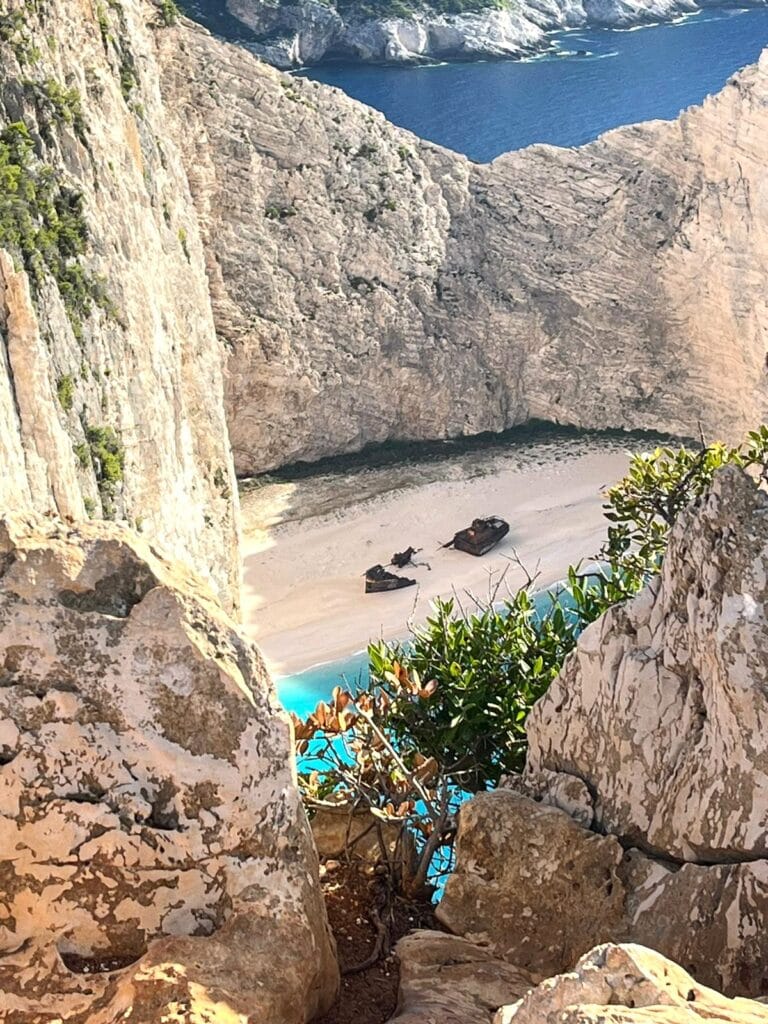
We took our drone out so we could film the shipwreck even closer:
When we walked away from the cliff we also noticed a monastery just 1 km away from the cliff.
Monastery of Agios Georgios Krimnon was originally built in the 16th century, during the Venetian rule of Zakynthos. It played an important role as a religious centre and refuge during times of pirate raids and war. The name “Krimnon” refers to the nearby cliffs (“krimna” means cliffs in Greek). The monastery is a fine example of traditional Byzantine architecture, with thick stone walls and a rustic appearance that perfectly matches the rugged surroundings.

Inside the monastery are some well-preserved Orthodox icons and frescoes. These are beautifully decorated and reflect the Orthodox Christian tradition of the island. Monks in black robes also walked around here and they still live and work here.

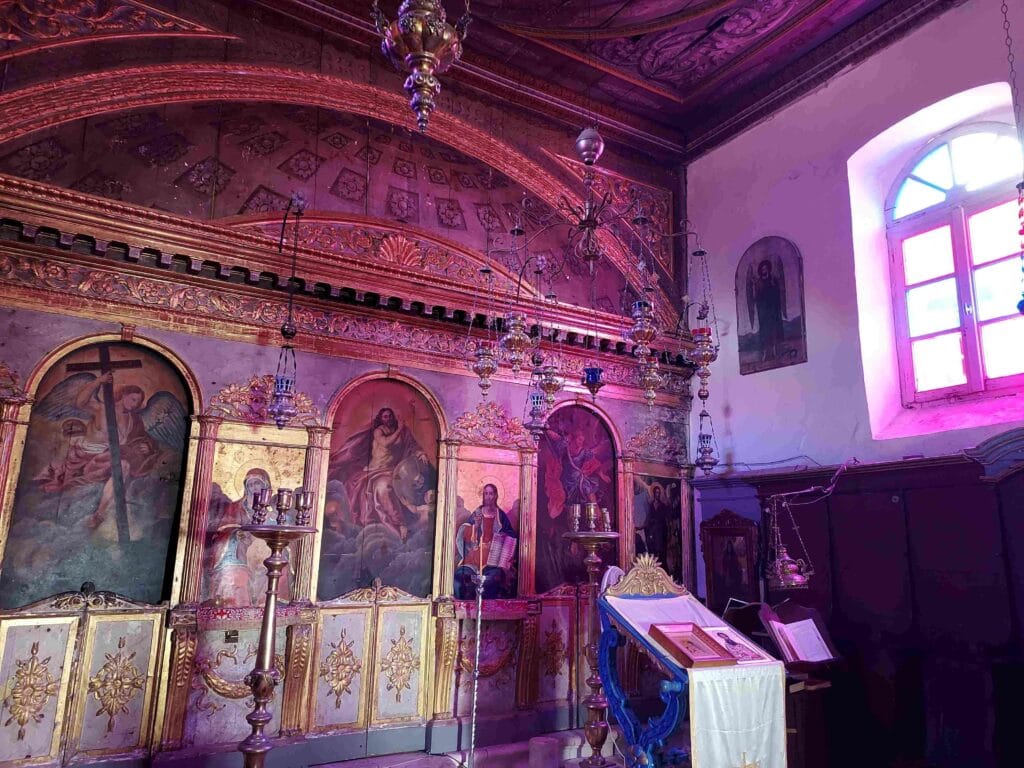
2. Anchoring at a Cliff Bay
Our friends Robert and Margo flew in from Holland and joined us sailing Kefalonia and Zakynthos. So they joined us on the trip to see the shipwreck from the water. They enjoyed swimming there also in the blue waters.
And then we had to find shelter for the night, which was not easy with the north west wind blowing directly into the bays on the west coast. About 10 km below shipwreck beach we found a sheltered bay. Because the cliffs here extended a little further into the water, they ensured that they blocked the waves coming from the northwest.


It turned out to be a beautiful bay, with the white cliffs to look at where swallows regularly flew in and out. And if you looked down, you saw the beautiful bright blue water. We filmed the scenery with our drone.
And the best part came around sunset, because the sky colored orange and we saw a beautiful sunset reflected even on the white walls that turned orange and had a happy quiet evening and night here.


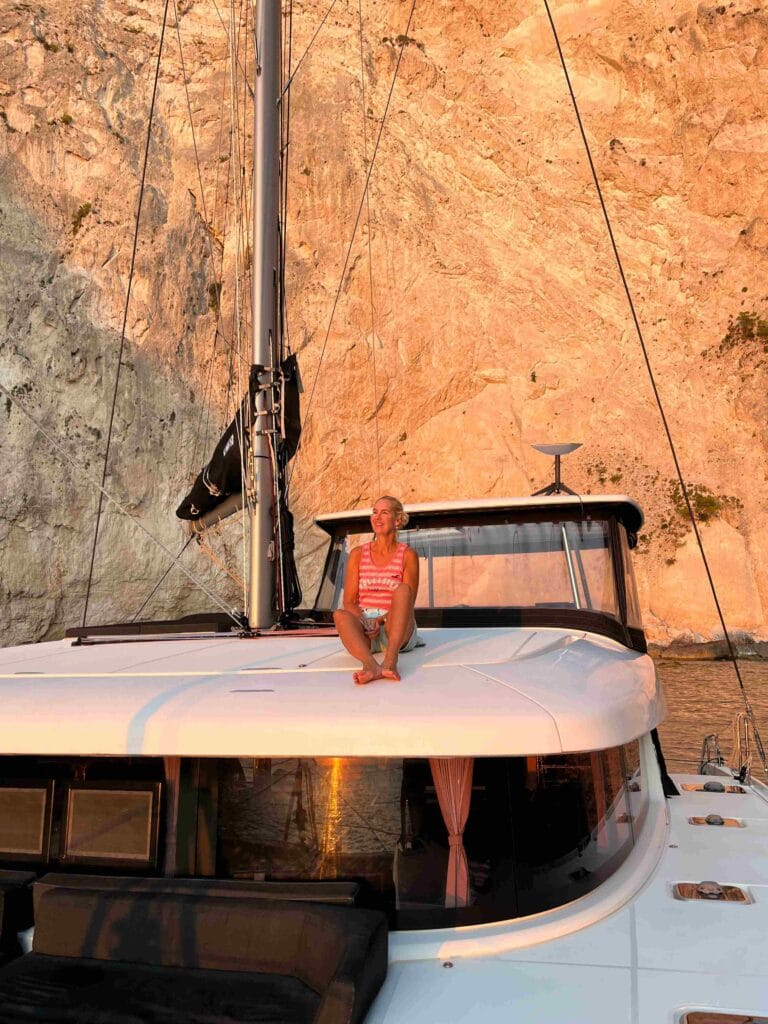
3. Porto Limnionas
We sailed further along the west coast, which looks quite rugged and uninhabited due to the regular wind on the cliffs. But from Kampi it became more touristy. Kampi is famous for the viewpoint on top of the cliffs and one of the best places on the island to admire the sunset. We had already noticed that in the sheltered bay on the west side there were beautiful sunsets here.
We stopped for lunch at Porto Limnionas. This is not a traditional sandy beach, but a natural cove or swimming area with crystal clear water surrounded by rugged rocks. We saw many young people swimming and snorkeling here. There were several floors with beach chairs available against the rock face and a trendy restaurant.

People often think that Greece is a bit old-fashioned in style and of course you still have the tarvernas with wooden beams in the ceiling, wooden tables with white and blue checked tablecloths, but there are also very trendy grand cafes and bars where you can sit beautifully.


Especially around Porto Limnionas the area was very stylishly decorated with wooden sunbeds, white cushions and thatched umbrellas.


4. Myzithres
We sailed further southwest and were looking forward to the spectacular Myzithres rocks. These are often depicted on brochures about Zakynthos or on the internet as typical Greek images. There are two impressive limestone peaks that rise dramatically from the sea. They offer a surreal landscape.

The Myzithres were formed by erosion, a process in which the sea has worn away the limestone over thousands of years. We also wanted to see this from above, because the seabed around it is crystal clear. The funny thing is that the rocks get their name from the traditional Greek cheese “myzithra,” which has the same pointed, conical structure as the rocks.
5. Keri Caves
We had another beautiful sunset. This would be one of the last on the southwest coast, because we continued our sailing trip further south. We anchored in a bay and got into our dinghy together with Robert and Margo, because we wanted to visit the famous Keri caves.
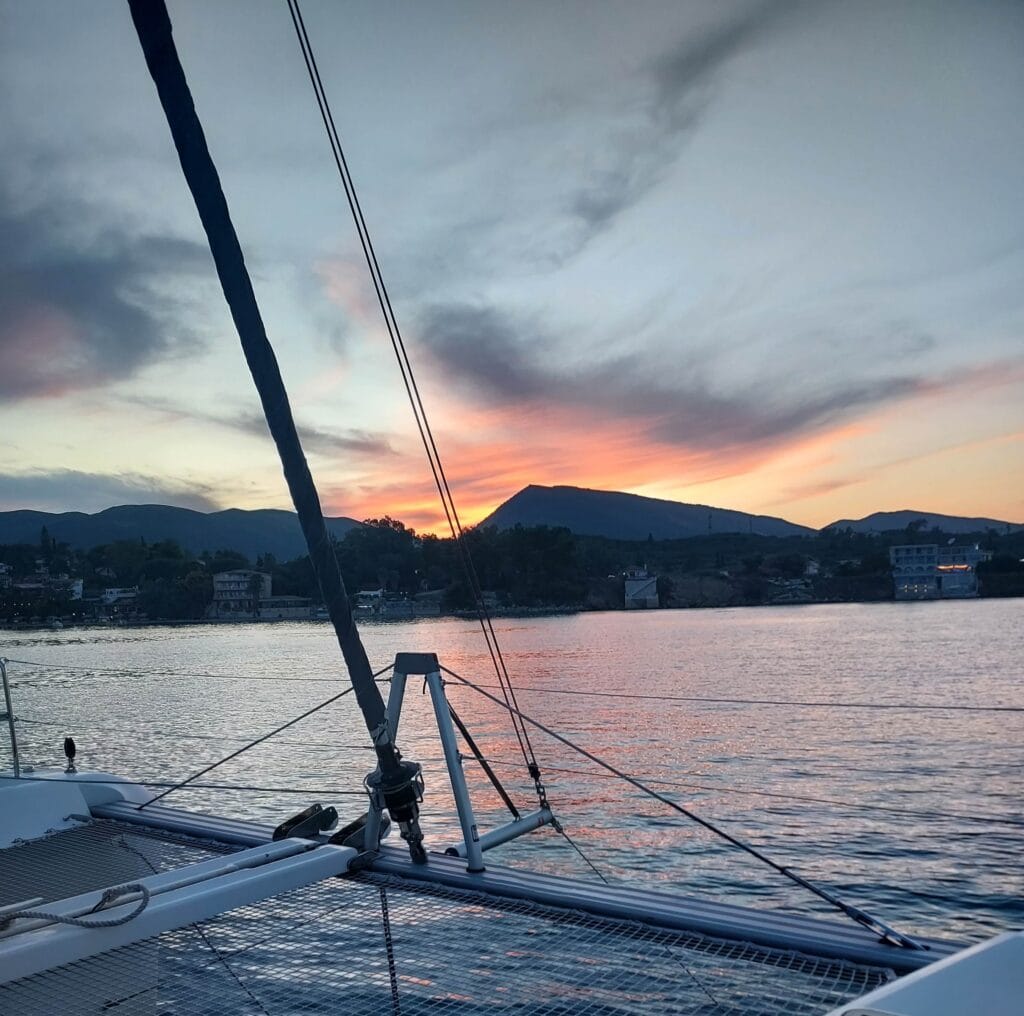

This is one of the impressive natural attractions of the island. The caves, formed by thousands of years of erosion by sea and wind, have created a network of natural arches and tunnels.
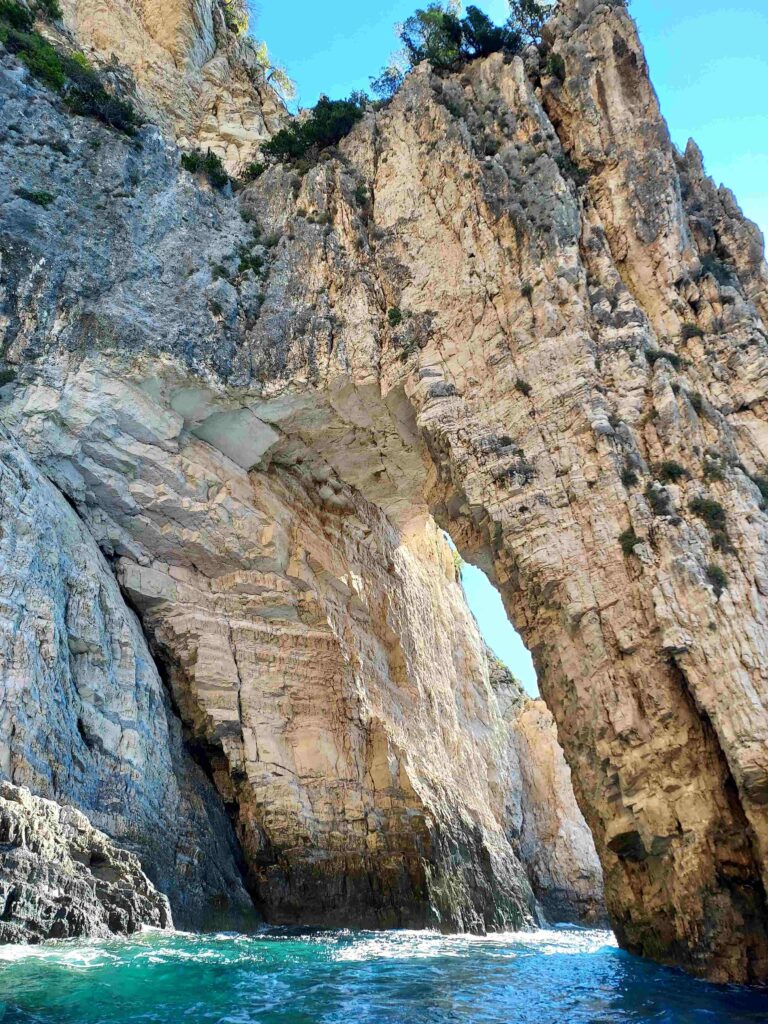

The combination of the high arches where you can sail under the narrow passages with the boat, or the small caves at the bottom where you can sail in, or if the caves are too small, you can moor your boat and swim there to snorkel in the coves.

The caves are characterized by their light blue water, caused by the reflection of the sun on the limestone walls. We found it spectacular and enjoyed this environment a lot!


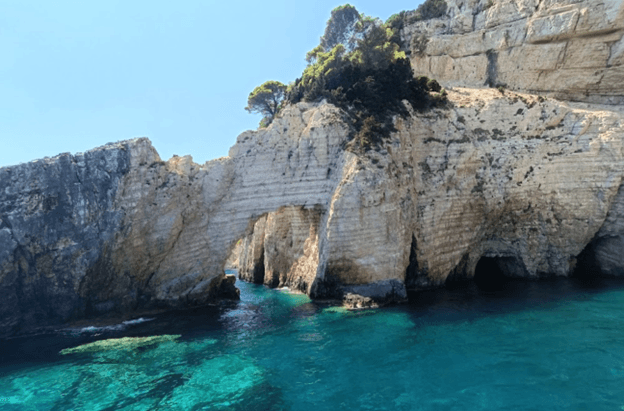

After the Keri Caves, we started to sail along the eastcoast of Zakynotos, next time more about that beautiful coast with the careta-careta we spotted (sea turtles of 80 kg and 1 meter long, caught on film!) and the famous sulphur beach.

